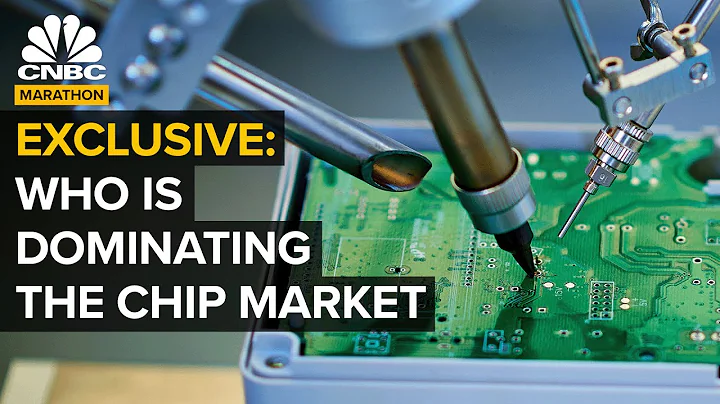On the evening of July 1, local time in the United States, the stock price of TSMC, the leading wafer foundry, fell rapidly at the opening and performed weakly throughout the day. It finally closed down 5.81% to close at $77 per share. The market value fell below US$400 billion to US$399.3 billion.

TSMC hit a high price of US$145 per share in January this year, with a peak market value of US$750 billion. In less than half a year, the market value fell by US$350 billion. The latest market value of Alibaba is US$312.2 billion, which is equivalent to TSMC losing one Alibaba and still having a surplus.

Why was TSMC, which has repeatedly achieved record highs in performance and market value, suddenly abandoned by the capital market? Is the performance failing, or has the chip industry lost its imagination?
Black Swan Raid
When one cockroach appears in the room, it means there are hundreds more hiding in invisible corners.
At the beginning of this year, along with the severe shortage and the rapid development of the chip market, a bad sign appeared: the demand for smartphones began to decline. Data released by market research organization Canalys shows that global smartphone shipments fell 11% year-on-year in the first quarter of 2022 due to poor economic conditions and low seasonal demand. China Academy of Information and Communications Technology data shows that mobile phone sales in the domestic market fell 29.2% year-on-year in the first quarter.

mobile phone chip is in large demand in the chip market and is also a core customer of advanced manufacturing processes such as 5nm/7nm. However, this does not seem to have affected TSMC. TSMC’s revenue in the first quarter was NT$491.1 billion, another record high in a single quarter.
At the same time, TSMC is still aggressively expanding production and increasing prices. According to market news, TSMC built seven new wafer foundries last year and will build five more this year. This year and next year, TSMC’s capital expenditure will exceed US$40 billion, constantly rewriting its expansion history. TSMC also plans to continue to increase prices by 6% for most processes next year - all in all, it seems that the market is still highly prosperous.
This seems to be wishful thinking on the part of TSMC. If the decline in demand for mobile phone chips is the "first cockroach", then market rumors last week that the three core customers of Apple, Nvidia, and AMD were cutting orders from TSMC, completely crushed TSMC's stock price. Among them, Apple, the largest customer, is rumored to have cut its production by 10%, and AMD is rumored to have cut 20,000 7nm and 6nm wafers.
This means that not only is there a problem with the demand for mobile phone chips, but the growth momentum of demand for supercomputing chips and artificial intelligence chips is also reversing. TSMC’s troika of high-end manufacturing processes are all unstable.
No worries this year
Objectively speaking, the plummeting stock price of TSMC is largely not due to its own factors.
From the perspective of the capital market, the U.S. stock market fell sharply in the first half of this year. The S&P 500 index fell by 20.58%, falling into a bear market, the largest first-half decline in 52 years; The Nasdaq index fell by a cumulative 29.51%, the same Falling into a bear market and falling even further. TSMC, whose stock price has risen sharply in the past two years, cannot be immune.
From the perspective of the overall environment, Apple, Nvidia, and ADM have reduced orders because of the economic downturn and declining user consumption. Factors such as the Russia-Ukraine conflict and global inflation have suppressed consumption and will inevitably be transmitted to chip and wafer foundry.
TSMC’s absolute strength in the wafer foundry market means that this year’s performance will not be significantly affected. TrendForce's latest research shows that TSMC's market share is still expanding. In the first quarter of this year, TSMC's share reached 53.6%, an increase of 1.5 percentage points year-on-year, while competitor and Samsung dropped 2 percentage points year-on-year to 16.3%. The latest operating data shows that TSMC’s revenue in May was NT$185.7 billion, a year-on-year increase of 65.3% and a month-on-month increase of 7.6%. It has set a record high in single-month revenue for two consecutive months.
Even if the overall chip market is sluggish this year, TSMC’s revenue will hit a new high this year. So far, no institution has doubted it.
The key lies in next year, and next year's performance represents room for imagination.
Next year is full of variables
It is very difficult to predict the future. Half of this year has passed, and the predictions made by major research institutions for this year's consumer electronics and chip industries last year are now not accurate enough.From serious shortages to high inventories, the transition has been so smooth that many research institutions and manufacturers have not expected it. The Russia-Ukraine conflict, inflation, and epidemics come one after another... too many events have affected industrial development.
Looking forward to next year, Goldman Sachs Securities believes that TSMC's capacity utilization will drop by about 10% (the capacity utilization rates of 8-inch and 12-inch wafer fabs will drop to 89% and 91% respectively next year), but revenue will still be able to achieve 14.2% growth of. Objectively speaking, this is still a good result, but it is lower than TSMC’s previous expectations of short supply.
The reason is that despite the decline in consumer electronics demand, the demand for automotive chips continues to grow. Especially for automotive electronics, some institutional analysts say that the number of chips used in a traditional gasoline vehicle is 500 to 600, while a new energy vehicle can use 1,000 to 1,200 chips. Driven by China's strategic development of new energy vehicles, the demand for automotive chips has always remained high, and many countries with traditional oil vehicles are also actively or passively turning to new energy vehicles.
Of course, the development of new energy vehicles is also restricted by the rising prices of upstream raw materials, which is also a new variable. According to reports, the price of new energy vehicles in the United States increased by an average of 20% in May to resist the impact of rising prices for batteries and other products. This will inevitably curb consumers' desire to buy cars, thereby suppressing chip demand.
Some analysts believe that TSMC’s stock price has “fallen too much.” Capital voting with its feet reflects a general trend: this round of industry cycles in which chip demand is in short supply and prices are rising in price is over. Instead, there is industry differentiation and market differentiation. For example, the chip industry in mainland China is rising.
(Nanshan)





















